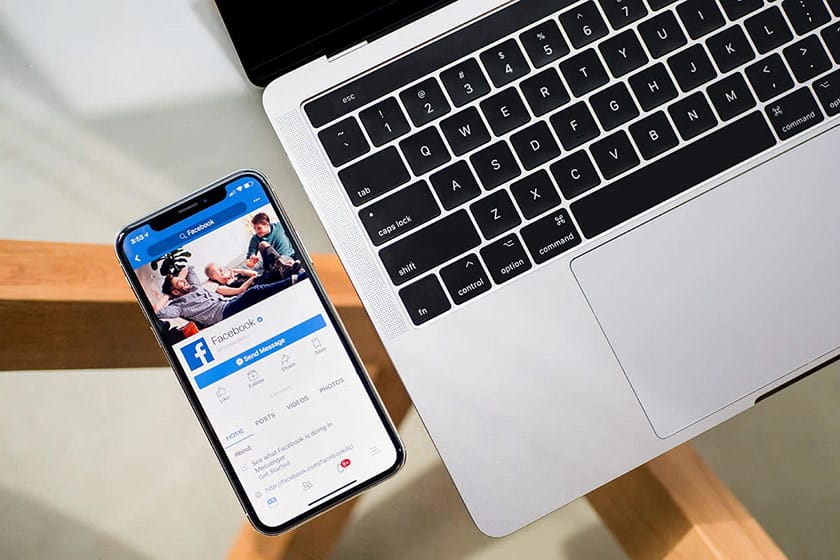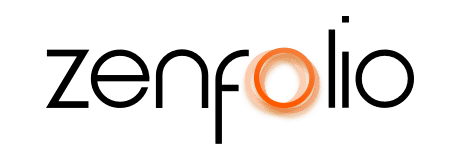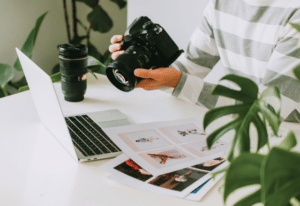Facebook advertising 101 for visual artists.
March 2nd, 2022
Facebook boasts over 2.23 billion active users worldwide, a number that’s growing 11% year-to-year. There’s no doubt that you’ve encountered your fair share of Facebook ads—but as a creative professional, it’s time to make Facebook ads work for you.
If your Facebook output is all selfies and vacation pictures, it’s time to get serious about using social media as a tool to grow your business. You need to refocus your energy and leverage the power of social media marketing. Get out your bullet journal and begin mapping out your strategy. At the top of your page scrawled in big bright letters should be the words Facebook advertising.
Why use Facebook advertising?
As of 2017, over five million businesses use Facebook ads each month. When organic reach was just not enough, many more millions more started using Facebook marketing in 2018. It’s time for you and your business to join their ranks.
The good news? Facebook advertising costs are low and the entire Facebook ad campaign process is pretty easy once you know how to get started.
Here’s some more good news: if you’re a photographer, illustrator, designer, artist, or other visual creative, you have a huge advantage over so many other businesses. That’s because images are absolutely key when it comes to effective Facebook advertising, accounting for 75% to 90% of an ad’s success rate.
In other words, Facebook advertising is its own art form. And a skillful ad will help you market your portfolio or offer your services to a specifically targeted segment of a huge global audience—basically getting your work in front of those who need and crave it most.
Facebook’s lush advertising ecosystem makes it a powerful yet dense platform. We’re here to guide you so that you don’t get lost in the weeds. Let’s get started!
1. Create your Facebook Business page.
A personal page won’t cut it when you’re beginning your Facebook marketing journey. Setting up a business account is essential. Even though it’s a quick and easy process, make sure you set aside enough time to do a thorough job.
Setting up your Facebook page.
First thing: head over to facebook.com/business and click Create a Page in the top right-hand corner. There are several types of business options.
- Local Business or Place
- Company, Organization or Institution
- Brand or Product
- Artist, Band, or Public Figure
- Entertainment
- Cause or Community
If you’re a visual artist—like a photographer looking to market your photography business, you will likely select either Local Business or Place or Brand or Product and your business type.
But how will you decide? Let’s stick with the hypothetical photography business scenario.
Select Local Business or Place if:
- You have your own photography studio or otherwise operate your business from a workplace with a specific address (not your home).
- You don’t mind having the reviews section enabled, where customers can publicly rate your business and leave comments.
Select Brand or Product if:
- You are a freelancer, work from home, travel to different locations for contracts, or if you want your business associated with you more than a specific location.
- You don’t feel comfortable enabling the Yelp-style review and rating system.
After you make your decision, you will be asked to provide a few more important details like the name of your business and your professional address (if you have one). You will also be prompted to select a Page category (basically your business’s subcategory) from a drop-down menu.
When you click “Get Started” you will be prompted to read and accept Facebook’s Terms and Conditions for Business Pages. Then you’re ready to move forward!
Add profile picture and cover photo.
A good first impression is invaluable. High-quality images on your Business Page will build trust and interest in your potential customers. Pages with attractive cover photos and professional-looking profile images typically get more Page engagements, including likes, comments, and inquiries.
Upload your profile image first. This image will be the face of your brand or business, appearing in search results and customer interactions. If you’re a professional designer or illustrator (or have worked with one to create your branding), using your own beautiful logo is the way to go.
A quality example of your work or signature offering (whether it be a photograph, a design commission, a painting, etc.) is a good idea for the cover photo.
Ensure your images:
- Align with your business or brand
- Appear clear and sharp
- Engage in visual storytelling
- Are consistent
- Are properly cropped
Rounding out your business page.
It’s called fleshing it out for a reason—if you want your Facebook marketing strategy to attract people to your Business Page, you need to add a human touch.
Facebook will prompt you to fill out the rest of the elements on your Page to make a well-rounded, authentic impression. In case you skipped any steps thinking you’d return to them later, here’s a handy to-do list:
- Add a short description of 155 characters max. Think of it as a clear, simple elevator pitch.
- Create a username for your Page to set up a vanity URL. It should be 50 characters max: short, sweet, easy to remember.
- Click “About” in the left hand Facebook Page menu: here you can add a lengthier description by clicking Edit Story, and include contact information.
- Providing a comprehensive description—clearly written, grammatically correct, and typo-free—is a great way to set the right professional tone, and give your audience a compelling reason to engage with you.
- Create your first post before you start inviting people to like your Business Page. Facebook gives you a range of options like creating an event, offering a promotion, or adding a milestone.
- Get networking! Invite all of your friends and connections to like your new Business Page. Ask them to share widely to help get things moving.
- Begin community building. Like and engage with other like-minded brands and businesses.
- Get verified so that your audience knows they’re communicating with the real deal—not a fan or imposter account. Click on Settings, head to the General menu, and click Page Verification to get the process started.
2. Learn about Facebook Ad Formats.
As a creative, you know how to think outside the box – approach your Facebook ad campaign with the same perspective. Now that your Facebook Business page is set up, get familiar with the types of ads available to you.
Photo Facebook Ads.
You’re probably most familiar with this type of Facebook ad. (And for good reason! 65% of people are visual learners.)
Facebook ad requirements:
- Image
- Text
- 1200 x 628 pixels
Text:
- Up to 90 characters
Headline text:
- Up to 25 characters
- As Shakespeare said, “Brevity is the soul of wit.” It’s also integral to creating a successful Facebook ad. Keep your text short and sweet; the most effective headline length is just four words!
Photo Facebook ad tips:
- Keep your image text-free (or use as little text as possible). This tool ensures that text overlay accounts for less than 20% of your photo.
- Keep your photo aligned with your brand
- Brush up on your color theory to create an impact while keeping things minimal
Video Facebook Ads.
Facebook video ads have massive potential to captivate your audience—if you can spark their interest quickly enough. Research shows that 47% of your video’s ad value lies in the first three seconds!
Facebook ad requirements:
- Video
- Text
- Thumbnail size is a minimum width of 600 pixels x video aspect ratio
Text:
- Up to 90 characters
Headline text:
- Up to 25 characters
Facebook ad dimensions:
- Full landscape (aspect ratio 16:9) or square (aspect ratio 1:1)
- Alternative aspect ratios available for particular campaign formats
Maximum Facebook ad length:
- Up to 120 minutes
- Remember the three-second rule above? Don’t you dare consider anything even remotely near 120 minutes – go for quality and think short, simple, and impactful!
Carousel Facebook Ads.
Carousel ads are compelling and interactive because they use a mix of images and videos (each with their own link) to create a story around your creative product or service. You can show up to 10 visuals on “cards” that your audience can click through—within a single ad!
Facebook ad requirements:
- Up to 10 photos or videos
- Text
- 600 x 600 pixels
Text:
- Up to 90 characters
Headline text:
- Images: up to 40 characters
- Video: up to 25 characters
Maximum Facebook ad length:
- Two minutes (all videos in the carousel combined)
Carousel Facebook ad tips:
- Since carousel ads are a sequence of images and videos, it’s great way to develop a narrative around your brand or product
- You want to get your audience’s attention and have them swipe through the whole carousel, so create a visual link between the images to keep them going right to the end
- The text you add can also connect each element of the carousel, so put thought into how the copy flows from one “card” to the next and stay consistent with your brand’s voice.
Collection Facebook Ads.
When you click on a collection ad’s cover image or video, you can look through several products or learn about the multiple features of a single offering. They have the look and feel of Facebook’s newsfeed, so this ad format is very mobile-friendly. They’re meant to grab your audience’s attention and drive them to engage while browsing on their mobile device.
Facebook ad requirements:
- Image and video content
- 1200 x 628 pixels
Text:
- Up to 20 characters
Headline text:
- Up to 25 characters
Facebook ad dimensions:
- Full landscape (aspect ratio 16:9) or square (aspect ratio 1:1)
Maximum Facebook ad length:
- Up to 120 minutes
Collection Facebook ad tip:
- Curating a collection ad is an aesthetically appealing way to encourage exploration and ensure your audience keeps clicking through to see multiple aspects of a product or service
Other Facebook Ad formats.
You’ve got the basics under your belt. These additional ad formats use a combination of photo, video, carousel, and collection to achieve different advertising goals.
- Slideshow: motion, sound, and text – a slideshow gives you all three.
- Canvas: full-screen ads for a full-throttle effect.
- Lead generating: create custom forms to gather info on your audience.
- Offer: who doesn’t love a good deal or promotion?
- Post Engagement: boost what you’ve already posted on your Page to create some buzz.
3. Set a Facebook Ad objective.
First, head over to your bright, shiny, new Facebook Business page. Click on the Facebook Ads Manager to get this show on the road.
Now you will choose an objective for your ad. You can accomplish a wide array of objectives depending on your Facebook marketing strategy, from increasing page engagement and awareness to driving conversion (turning curious site browsers into active brand ambassadors and buyers).
Keep in mind that your objectives will affect your Facebook advertising costs.
- Conversion-focused objectives are pay-per-action (also referred to as cost per action), meaning that you pay when your audience makes a purchase, fills out a form, etc.
- Exposure and brand awareness objectives are pay-per-impression (also referred to as cost per impression), meaning that you pay based on how many people you reach.
Facebook Marketing options: Awareness, Consideration, and Conversion.
Facebook will prompt you to decide on a marketing objective before creating your ad and offers several options that fall under one of three headings: awareness, consideration, or conversion.
Brand awareness
- Maybe your hypothetical photography business has cornered the market on weddings and you want to reach new audiences for your portrait photography or editorial work? This is the objective for you.
Reach
- You have an audience but you feel like your efforts are only really reaching a few of them. Cover more ground with this objective.
Traffic
- Drive traffic to your exquisitely curated website or a specific landing page.
Engagement
- Empower your audience by exposing them to a specific post to increase views, likes, comments, and shares. Have a specific event coming up? This is the way to promote it.
App installs
- Having a mobile or desktop app is a huge advantage—don’t squander it. Prompt your audience to install it.
Video Views
- Video content is a great way to increase brand awareness… if it’s getting in front of enough eyeballs. Make a wider impact with this objective.
Lead Generation
- Attract new prospects and move them along the sales funnel. Learn about new people who are interested in your product or service and cater to their needs so they will commit to you.
Conversions
- Successfully entice website lurkers into taking action, whether that means booking a session, buying a print, signing up for a newsletter, or subscribing to your feed.
Product catalog sales
- Link your Facebook ads with a catalog of curated products to increase the likelihood of your audience engaging in some retail therapy.
Store visits
- If you’re lucky enough to have your own storefront or studio, make sure your audience is coming to visit you in person.
Target audiences for Facebook Ads.
Leverage the power of Facebook’s data and analytics tools. Target your Facebook ads mindfully to reach the right people at that magic moment when they’re most receptive.
Two simple but essential tips to optimize ad targeting:
- Create your Facebook ads through Ads Manager
- Keep an up-to-date archive of current customers so you can target ads for them.
When creating a new audience (under the “Audience” section of Ad Set creation), here is how you can break it down:
- Location (worldwide, region, country, state, province, and more)
- Age (within a range)
- Gender
- Language
- Detailed targeting (include or exclude audiences based on demographics, consumer habits, and more)
- Connections (tap in to your audience’s connections to other people, brans, apps, events, and more)
- Custom audiences (this is where that archive of current customers comes in handy!)
- Lookalike audiences (target people similar to your custom audience)
Remember: the audience insights tool is essential to understanding your target demographic and learning how to best reach the people who want and need you most.
4. Create a Facebook Ad budget.
Now we’re down to the nitty-gritty. Let’s talk time and money.
How much does Facebook advertising cost?
Facebook ad budgets vary widely from business to business. Remember to be thoughtful and realistic about what you can spend, but don’t fret—one of the beautiful things about Facebook advertising is that you can make an impact with any budget.
There are two ways of going about it:
Option 1: Daily max budget.
- Your Facebook ad runs until your daily budget is met.
- A daily budget gives you the most control over what you spend each day.
- Scheduling your ads daily is the most effective way to manage your budget and spend the same amount per day.
Option 2: Lifetime max budget.
- Your Facebook ad runs until your lifetime budget is reached or your scheduled campaign time ends.
- Using a lifetime budget allows Facebook’s algorithms to deploy your ad at the optimal time of day to have peak impact.
- The amount you spend will vary from day to day.
Facebook has some pretty advanced budgeting options that will break down what you’re spending and where, but it’s important to keep this pair of things in mind:
- One business does not equal one ad. You can run more than a single Facebook advertising campaign at a time! Set a global spending cap for your account and indulge in multiple campaigns with different objectives.
- Opting for a daily max budget is a great way to keep track of your budget—if you set an end date. If you don’t, your ad will continue to run indefinitely, charging your credit card each time. Yikes! Don’t leave yourself open to any nasty surprises and set a fixed end date.
The bottom line? For less than a cup of coffee a day, you can reach up to 4000 people.
$1 is the minimum Facebook ad spend, which is a pretty accessible place to start building from. Facebook ads are so fantastic because they have the potential to scale and grow alongside your brand and budget.
5. Create your Facebook Ad.
You’re a creative—let’s do the darn thing and create a Facebook ad!
Depending on your advertising objectives, you can start by:
- Promoting a preexisting post such as a special event or promotion
- Creating a brand-new ad (using the steps above: choosing a format, entering your image, text, and media components, and making sure they adhere to the appropriate size specifications and character counts)
Luckily you’re not going in blind. There’s a Facebook ad preview tool that lets you ensure your ad looks gorgeous across platforms, from mobile to desktop to newsfeed. You can get every detail just right.
Facebook Ad design tips.
You probably already have a keen eye for elegant design. Facebook ad designs are a slightly different ballgame. Now that you’re all set up and ready to go, take the following suggestions into consideration as you continue to refine your Facebook marketing strategy:
Try multiple designs.
Always test your ad designs! Design two to four different Facebook ads and tweak each one’s visual approach. Then track each ad’s success rate. Measuring this data (conversion, impressions, engagement, etc.) will help inform future design decisions, with results, not whims.
Create contrast.
90% of a first impression of a product is based on the color alone. Studies also show that using contrasting colors in your Facebook ad will not only pique interest—it’ll boost engagement by up to 60%. Maybe it’s time to ditch the monochrome.
Include a call to action.
A call to action (CTA) is designed to prompt your audience to act. Once they’re intrigued by your brand and Facebook ad campaign, a CTA gives them a logical next step or incentive. If you’re offering a discount on portrait photography, for example, you want to let your audience know that they must act soon to take advantage of the offer.
Say goodbye to stock images.
Your audience is already inundated with advertising at every turn. Using a photo that is very obviously a stock image or that may have already been viewed in another brand’s ad makes your business seem easy to tune out or dismiss. You don’t want to come off as spam. Avoiding cheesy or overused stock imagery is the way to go.
Use emotion to your benefit.
From image to accompanying text, you want your Facebook ad to resonate powerfully with your audience. If you can make a person feel something, that’s half the battle. Studies prove that ad campaigns that use emotional content performed twice as well as more standard ads.
Create brand alignment with a color overlay.
We associate so many brands and platforms with color. Facebook blue, Pinterest red, Snapchat yellow—the list goes on. If you associate your brand or business logo with a particular color, overlaying that color over your Facebook ad will help your audience continue to make that connection, too.
Change up your ads often.
The last thing you want is ad fatigue. Don’t oversaturate your audience and drive them away forever. Instead of putting the same thing in front of them over and over, rotate your ads frequently so that they get to know different elements of your brand.



